
How to Use 24V-9V 3A buck converter: Examples, Pinouts, and Specs
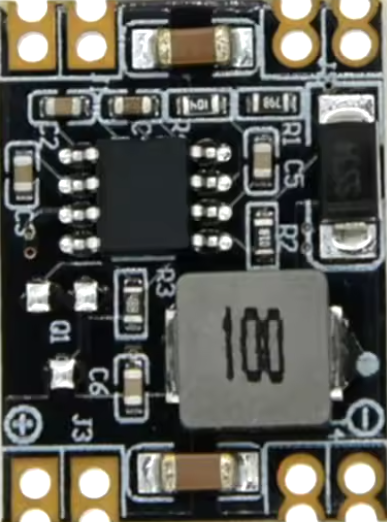
 Design with 24V-9V 3A buck converter in Cirkit Designer
Design with 24V-9V 3A buck converter in Cirkit DesignerIntroduction
The 24V-9V 3A buck converter is a DC-DC step-down voltage regulator designed to convert a 24V input voltage to a stable 9V output voltage with a maximum output current of 3A. This component is highly efficient, minimizing energy loss during the conversion process, and is widely used in applications requiring a lower voltage supply from a higher voltage source.
Explore Projects Built with 24V-9V 3A buck converter
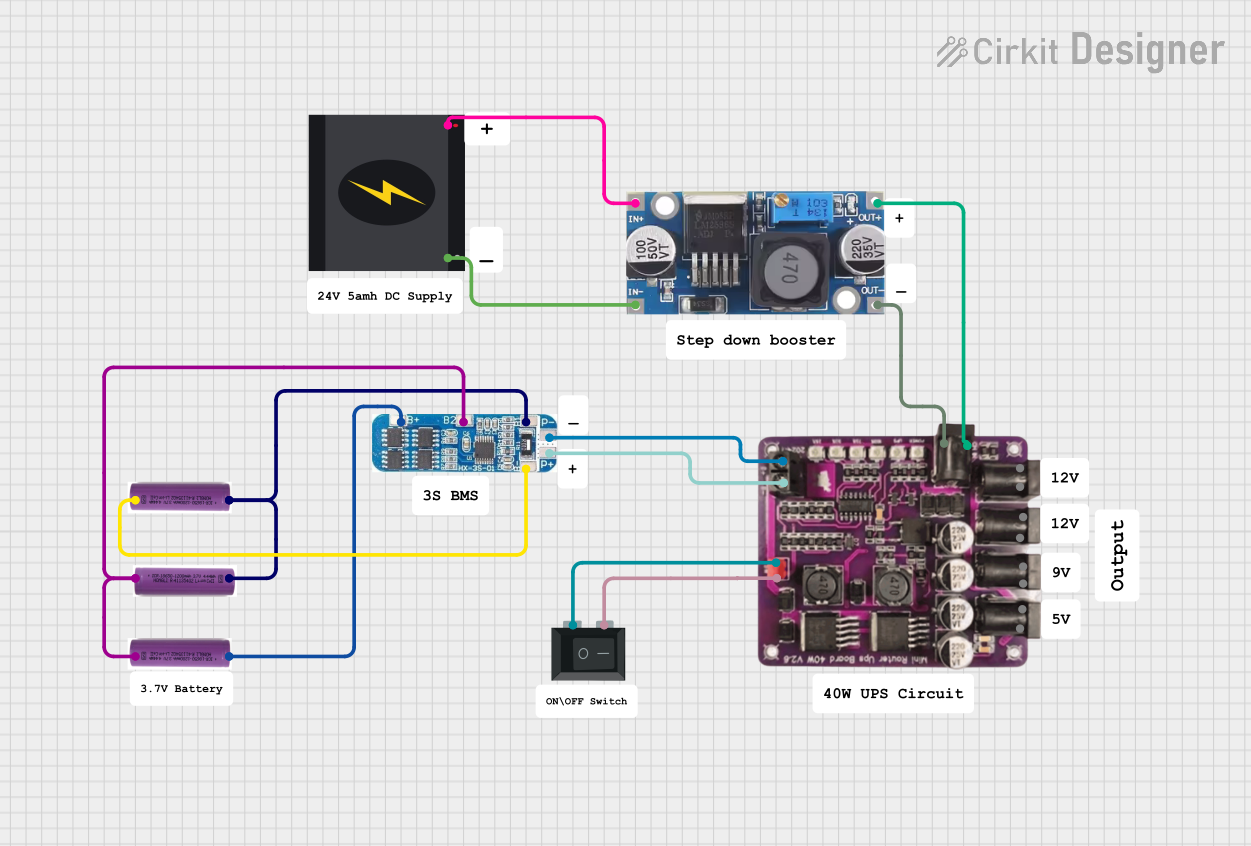
 Open Project in Cirkit Designer
Open Project in Cirkit Designer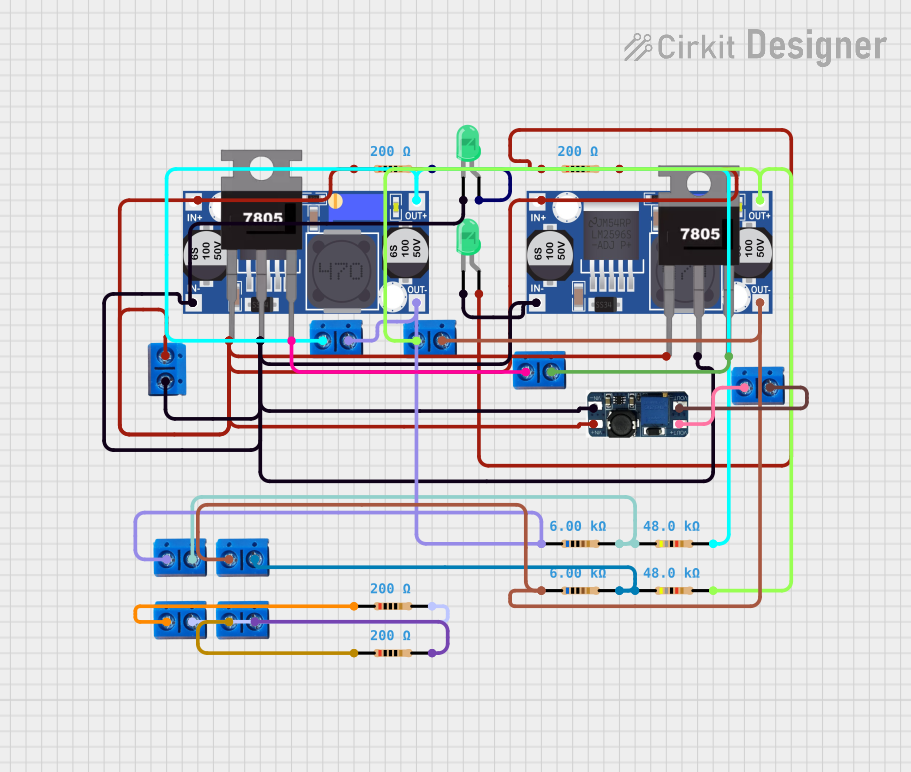
 Open Project in Cirkit Designer
Open Project in Cirkit Designer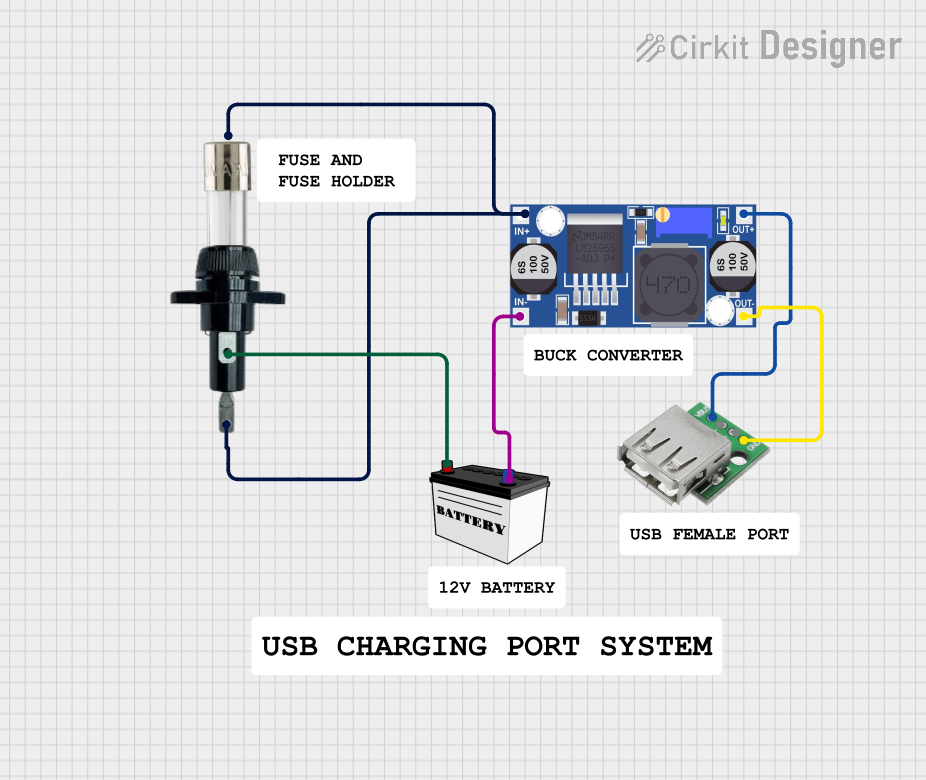
 Open Project in Cirkit Designer
Open Project in Cirkit Designer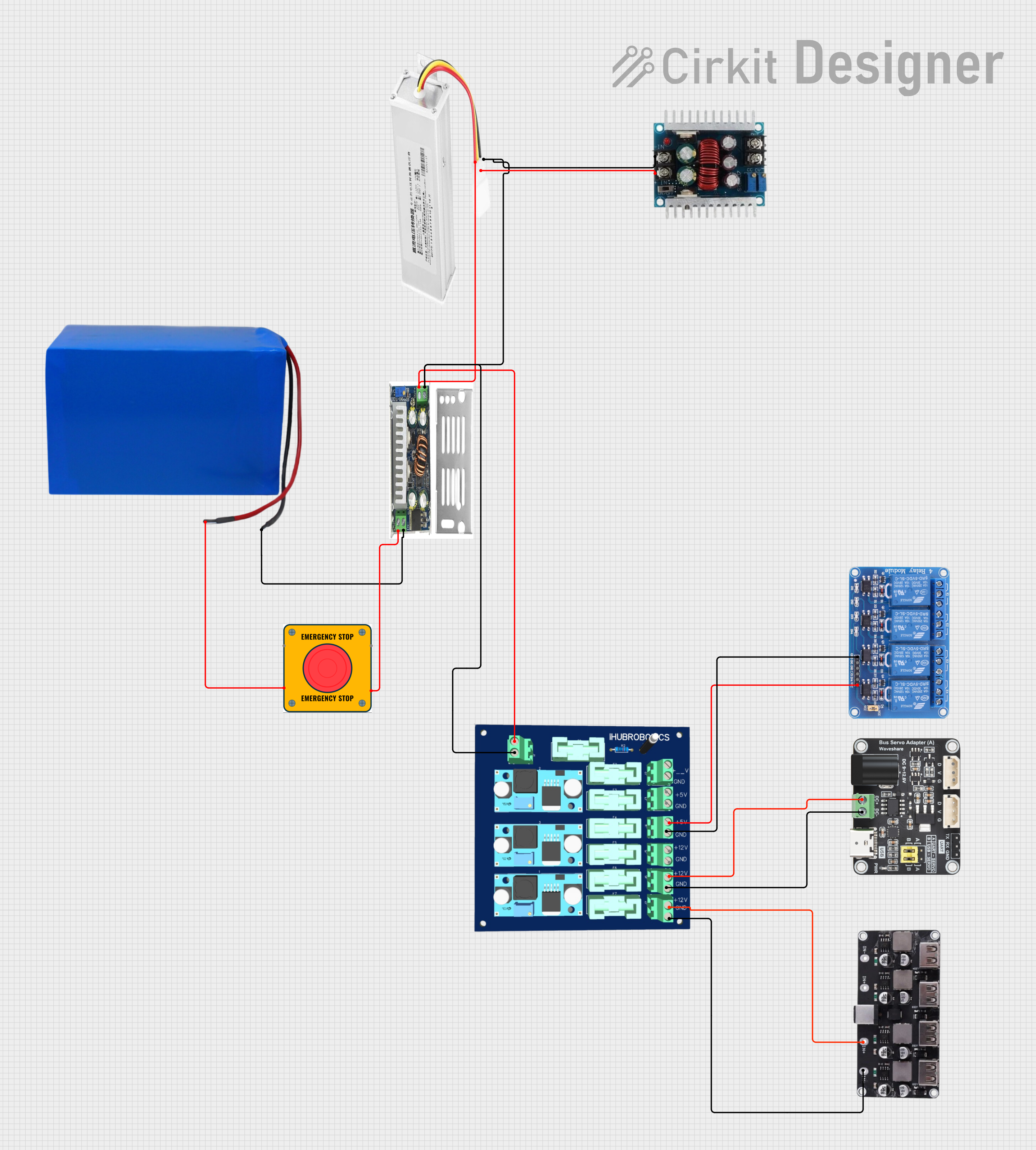
 Open Project in Cirkit Designer
Open Project in Cirkit DesignerExplore Projects Built with 24V-9V 3A buck converter

 Open Project in Cirkit Designer
Open Project in Cirkit Designer
 Open Project in Cirkit Designer
Open Project in Cirkit Designer
 Open Project in Cirkit Designer
Open Project in Cirkit Designer
 Open Project in Cirkit Designer
Open Project in Cirkit DesignerCommon Applications and Use Cases
- Powering 9V devices from a 24V power source
- Battery-powered systems requiring efficient voltage regulation
- Industrial automation and control systems
- Robotics and embedded systems
- LED drivers and lighting systems
Technical Specifications
The following table outlines the key technical details of the 24V-9V 3A buck converter:
| Parameter | Value |
|---|---|
| Input Voltage Range | 12V to 24V |
| Output Voltage | 9V |
| Maximum Output Current | 3A |
| Efficiency | Up to 95% |
| Switching Frequency | 150 kHz (typical) |
| Operating Temperature | -40°C to +85°C |
| Dimensions | Varies by model (e.g., 45x25 mm) |
Pin Configuration and Descriptions
The buck converter typically has four pins or terminals. The table below describes each pin:
| Pin Name | Description |
|---|---|
| VIN | Input voltage pin (connect to 24V power source) |
| GND | Ground pin (common ground for input and output) |
| VOUT | Output voltage pin (provides 9V regulated output) |
| EN (optional) | Enable pin (used to turn the converter on/off) |
Usage Instructions
How to Use the Component in a Circuit
Connect the Input Voltage (VIN):
Attach the VIN pin to a 24V DC power source. Ensure the input voltage is within the specified range (12V to 24V) to avoid damaging the converter.Connect the Ground (GND):
Connect the GND pin to the ground of your circuit. This serves as the common reference point for both input and output.Connect the Output Voltage (VOUT):
Attach the VOUT pin to the load or device requiring a 9V power supply. Ensure the load does not exceed the maximum output current of 3A.Optional Enable Pin (EN):
If the converter includes an enable pin, connect it to a logic HIGH signal (e.g., 5V) to activate the converter. Pulling it LOW or leaving it unconnected may disable the output.
Important Considerations and Best Practices
Heat Dissipation:
At high currents, the converter may generate heat. Use a heatsink or ensure proper ventilation to prevent overheating.Input Capacitor:
Place a capacitor (e.g., 100 µF) near the VIN pin to stabilize the input voltage and reduce noise.Output Capacitor:
Add a capacitor (e.g., 47 µF) near the VOUT pin to smooth the output voltage and improve transient response.Load Requirements:
Ensure the connected load does not exceed the maximum output current of 3A to avoid overloading the converter.
Example: Using the Buck Converter with an Arduino UNO
The 24V-9V buck converter can be used to power an Arduino UNO from a 24V power source. Connect the VOUT pin of the converter to the Arduino's VIN pin, which accepts 7-12V.
// Example code to blink an LED using Arduino UNO powered by the buck converter
// Define the LED pin
const int ledPin = 13;
void setup() {
pinMode(ledPin, OUTPUT); // Set the LED pin as an output
}
void loop() {
digitalWrite(ledPin, HIGH); // Turn the LED on
delay(1000); // Wait for 1 second
digitalWrite(ledPin, LOW); // Turn the LED off
delay(1000); // Wait for 1 second
}
Troubleshooting and FAQs
Common Issues and Solutions
No Output Voltage:
- Cause: The input voltage is below the minimum required (12V).
Solution: Verify the input voltage and ensure it is within the 12V-24V range. - Cause: The enable pin (EN) is not connected or is pulled LOW.
Solution: Connect the EN pin to a logic HIGH signal (e.g., 5V) or check the datasheet for default behavior.
- Cause: The input voltage is below the minimum required (12V).
Overheating:
- Cause: The load exceeds the maximum output current of 3A.
Solution: Reduce the load or use a higher-rated buck converter. - Cause: Inadequate heat dissipation.
Solution: Add a heatsink or improve airflow around the converter.
- Cause: The load exceeds the maximum output current of 3A.
Output Voltage Fluctuations:
- Cause: Insufficient input or output capacitors.
Solution: Add capacitors as recommended in the usage instructions. - Cause: Noise or interference in the input power supply.
Solution: Use a filtered power source or add an input filter.
- Cause: Insufficient input or output capacitors.
FAQs
Q: Can I use this buck converter to power a 5V device?
A: No, this converter is designed to output 9V. To power a 5V device, use a 24V-5V buck converter or add a 5V linear regulator to the 9V output.
Q: What happens if I connect a load that requires more than 3A?
A: The converter may overheat, shut down, or fail. Always ensure the load current is within the specified limit.
Q: Can I use this converter with an AC power source?
A: No, the buck converter requires a DC input. Use an AC-DC adapter to convert AC to DC before connecting to the converter.